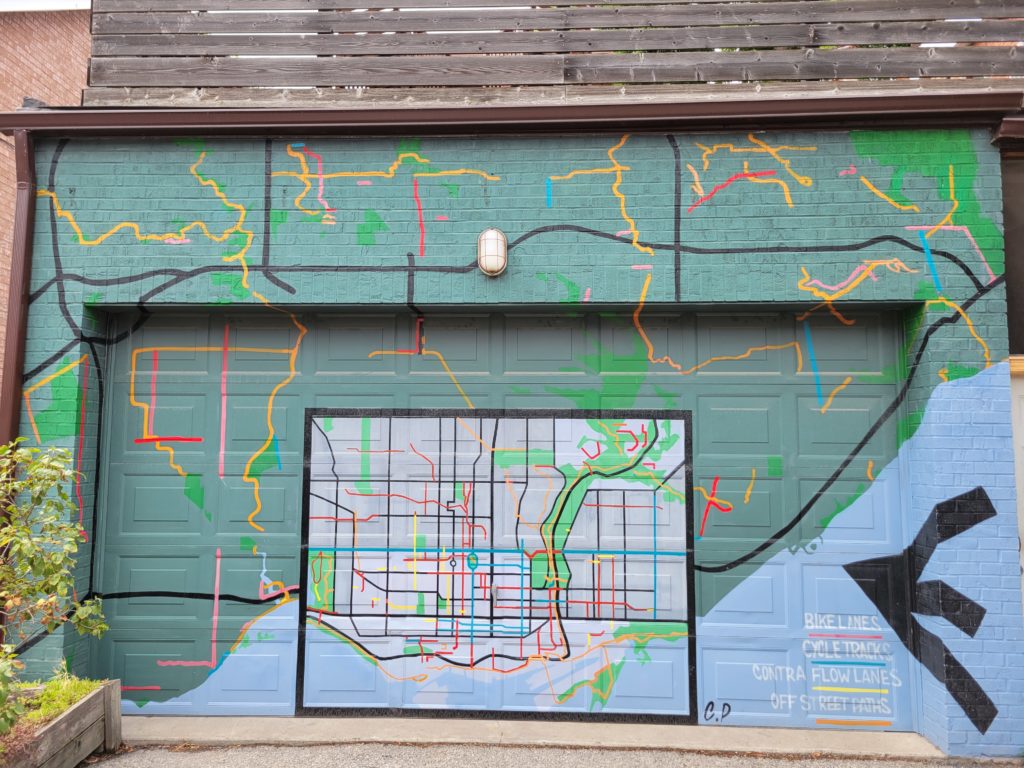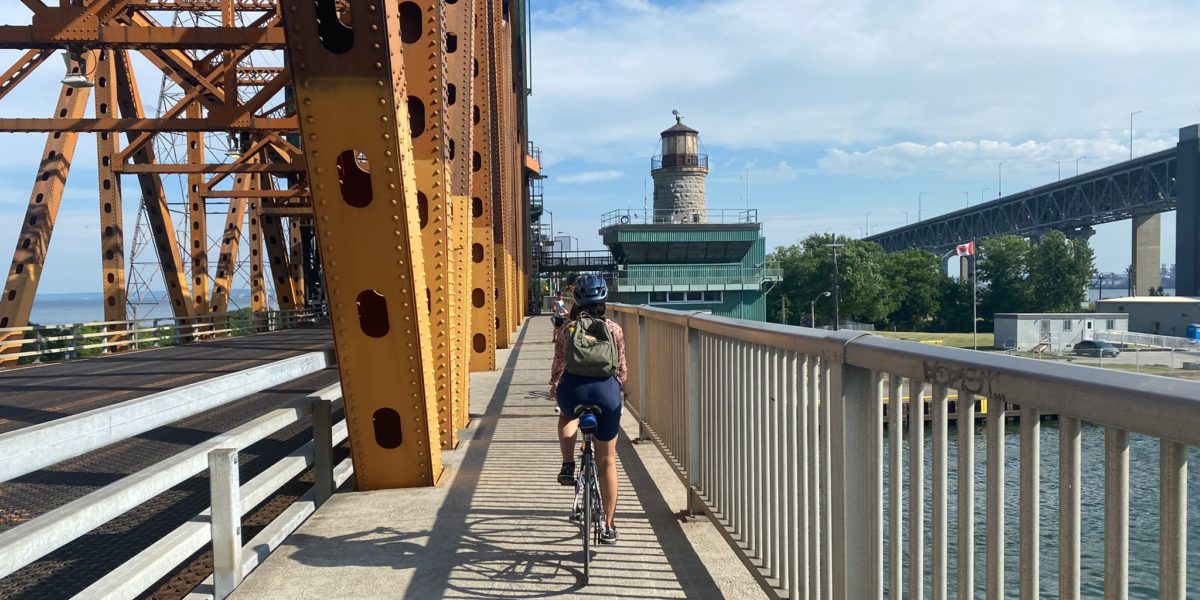When COVID-19 first rippled through the Greater Toronto Area in March 2020, along with toilet paper and canned beans, bicycles soon became a coveted item – one in short supply and high.
Toronto’s public bicycle-sharing system, Bike Share, logged a record high number of trips at 3.57 million in 2021. It was a 23 per cent jump from the year before- which was also record breaking. These numbers are in part a reflection of the year-on-year increased interest in cycling, and in part, embrace of a recreational activity where physical distancing was possible.
The City of Toronto’s cycling study in 2019 shows the percentage of residents reporting cycling has increased over the past two decades – from 54 per cent in 2009 to 70 per cent in 2019. A particular shift in numbers and attitude was reported in utilitarian cyclists – residents using cycling as an active transportation method to commute, increasing from 29 per cent in 2009 to 44 per cent in 2019.
Yet despite the rise in interest and participation, the Greater Toronto Area was recently reported as one of the worst major cities for cyclists in North America. According to a survey by PeopleForBikes – an advocacy group “uniting millions of individuals, thousands of businesses and hundreds of communities to make bike riding better for everyone,” Toronto’s cycling infrastructure ranked sixteenth out of 85 large cities in North America and 95 out of 1105 in the overall city rankings.
The lack of a “well-connected cycling network”
Toronto’s cycling network is under-connected. The city scored 33/100 for access to major transit hubs; 44/100 for access to recreational amenities like parks and trails; and a 25/100 score for access to parts of the city where residents live.
For Warren Huska, who has been an urban and recreational cyclist since 1990, this rating is no surprise. “Toronto is woefully behind in terms of a well-connected cycling network. It’s basically absent, leaving us with a bike patchwork of vanity and without any continuity.”
Huska blames this lack of progress on what he calls the North American auto-centricity, auto-think and auto-supremacy.
In 2020, Toronto set a one-year record for new on-street cycling infrastructure after it laid down 30 kilometres of new protected bicycle lanes. But this addition was an exception and perhaps a response to the uptick in pandemic cyclists. In 2021, only 18 kilometres of new cycling infrastructure was installed, and four years before the pandemic, an average of only 5.2 kilometres of new protected lanes were installed annually.
Fred Sztabinski, who started the bike cafe, Fix Coffee + Bike, in 2011, has an evolving mural of all the bike lanes in Toronto. “In 2020 the map changed and grew quite a bit,” he said, “but still scattered growth.”
Before opening the shop, Sztabinksi was an urban planning professional and bicycle policy professional for 15 years. In his opinion, Toronto is friendlier to cyclists than it was ten years ago. He said: “The pandemic sure accelerated infrastructure projects but we’re nearly not as ambitious as other cities. The city is still intimidating for people taking up biking for the first time. So I believe both – we’ve come a long way in the past two to five years, but have so much further to go if we want to see people naturally choose biking.”

Toronto, in contrast with other bike-forward Canadian cities
Toronto lags behind compared to European cities such as Copenhagen and Amsterdam, but also when compared to other Canadian cities like Montreal and Vancouver. The latter reported as one of the best biking cities in North America with more than 450 kilometres of lane-kilometers of bike routes, compared to Toronto’s 367 kilometres of cycling tracks.
The West Coast Canadian city also entered the Top 20 Best Cities for biking curated by the Copenhagenize Index in 2019 – “the most comprehensive and holistic ranking of bicycle-friendly cities on planet earth.” It reported Vancouver as “one of the few North American cities to push the boundaries and steadily innovate over the past few years when it comes to bicycle urbanism.” Montreal, however, is the only North American city that has managed to retain a spot in the Copenhagenize Index since 2011.
On the other end of the spectrum, Toronto has experienced an increase in the number of bicycle-related ER visits with a 28 per cent jump between April 2020 and March 2021. A part of this uptick could be that a lot of new pandemic cyclists don’t know defensive cycling, but largely I believe it’s because the city simply lacks the necessary infrastructure to protect cyclists.
While Sztabinski believes Toronto has made progress in making the city more conducive to cycling, he thinks the city has ways to go if we want people to naturally choose biking as a transportation mode.
“We haven’t been nearly as ambitious as other cities and we’re not willing to make the trade-off needed to transition away from being a car-first city. Toronto’s never seen a bike-friendly mayor compared to other cities like Vancouver and Paris. We have to make the commitment and then follow through with the dollars,” he said.
And Huska agrees. “We have a fairly regressive council in Toronto. Car-oriented suburban wards are antagonist to active transportation,” he said. “What they’re missing is the pent-up demand for cycling. Danforth-Bloor is proof. We see lots more people stopping and shopping at the Danforth. Better bike lanes help the local economy, and they help the environment.”
The future of cycling in Toronto
Keagan Gartz, Executive Director at CycleTO – an advocacy and education charity working on policy to improve Toronto’s cycling culture – believes three things are holding the city back from transforming into a vibrant cycling city: infrastructure, education and the idea of who a cyclist is.
The City, she said, is not resourced to manage the demand, especially rethinking ways of travel in a post-COVID environment. Currently, there is a 2022-2024 Near-Term Implementation Program in progress. The program proposes approximately 100 centreline km of new bikeways, as well as upgrades to existing routes and studies for future implementation.
“One thing sorely missing is cycling education in schools. Why are we teaching kids square dancing in physical education but not cycling?” It’s a real opportunity, Gartz said, “to teach kids about rules, signals and give parents confidence to send their kids out riding, particularly in suburban settings where we can change the way future generations commute.”
Just as importantly, Gartz says, cyclists need a rebrand. “Right now when you think of a cyclist, most likely you’ll conjure up an image of a white man in Lycra … The term ‘cyclist’ as an identity is loaded. Lots of people ride a bike for transportation, but the term ‘cyclist’ implies an identity, which can dictate who feels included and who does not.” The diversity of Toronto needs to be reflected in cycling culture to encourage all people to take up biking.
The benefits of cycling are many – it’s better for the environment, local economy, and physical and mental health. But it also has positive urban planning implications. Toronto’s population is set to increase to over 20 million by 2046, compared to its current 14.7 million.
Encouraging more people to take up the saddle can result in a city that creatively pursues ways to ease auto congestion, lower pollution levels and caters to all kinds of residents, from cyclists, to pedestrians, kids, skaters and even drivers.
July 26, 2022 – Editor’s note: This article originally cited the City of Toronto’s plans to add 525 kms of bike lanes to the existing network over the next ten years. This, however, was based on a 2016 plan. This sentence has since been removed from the article and has been replaced a line from Toronto’s 2022-2024 Near-Term Implementation Program.
The piece has also been updated to include a longer quote from Keagan Gartz, to better reflect what Gartz hoped to convey.




